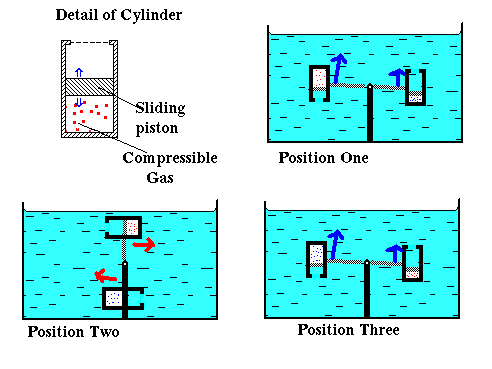
The clever bit here is that the cylinders are mounted opposite sides up. This means that at any given time (except when the beam is vertical) one piston falls down onto the gas crushing it while the other falls down away from the gas expanding it.
In position one the red gas (in the cylinder on the left) is expanded and the blue gas (in the cylinder on the right) is compressed. The expanded gas has a larger upward force than the compressed gas since it displaces more water. This means there is a net clockwise force and the system will turn clockwise.
In position two, the beam has reached the vertical position. The pistons should be under approximately the same pressure and be restored to their equilibrium positions. Momentum will carry the system round until it reaches position three. If you don't like the momentum explanation you could always introduce a second set of cylinders similarly mounted on a beam at right angles to the first.
In position three we have reached the exact opposite position to position one. The cylinders have rotated far enough to swap places and the effect is the same as it was in position one. Clockwise rotation continues.
Thus it has been demonstrated that the system will run forever and could even produce power.
Back to my home page.